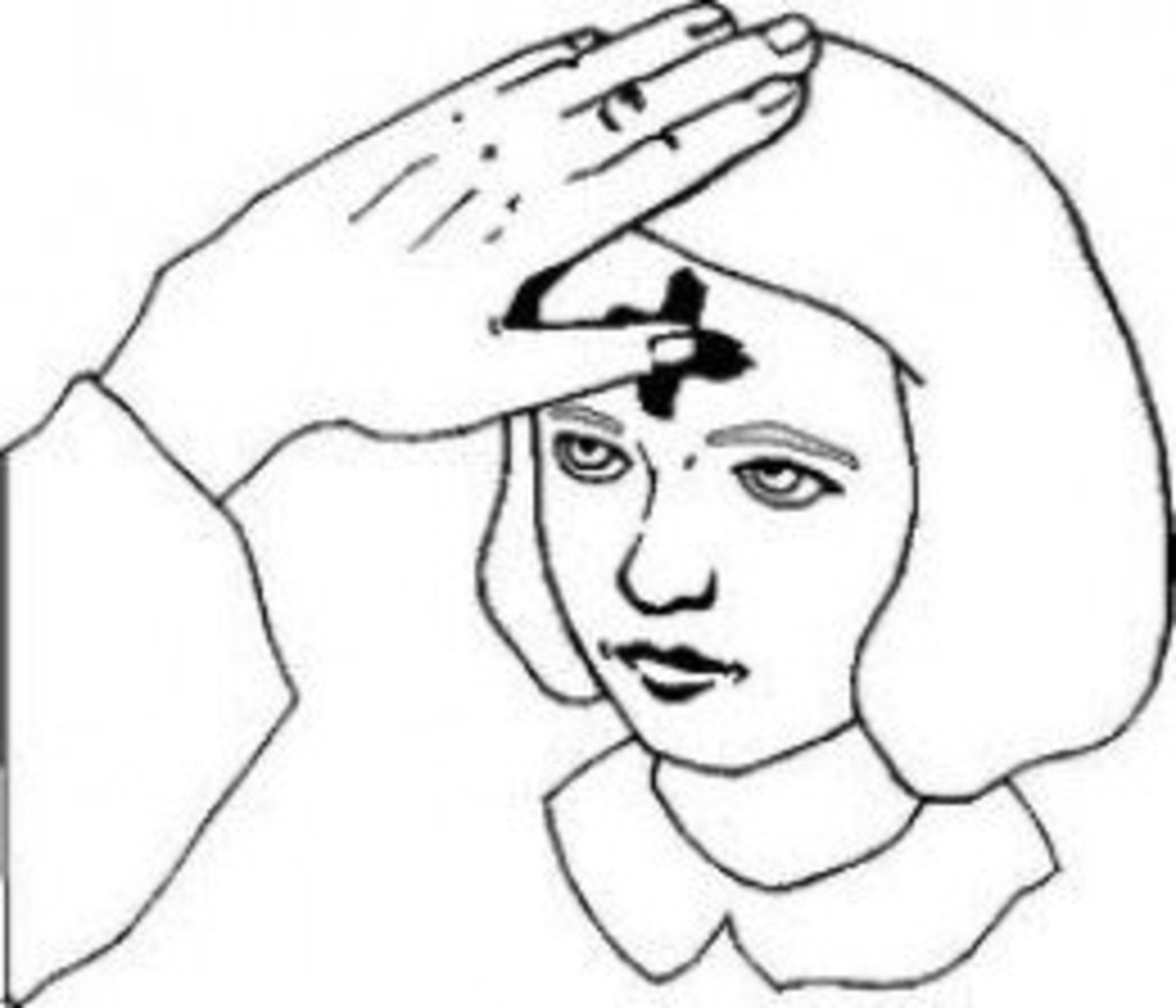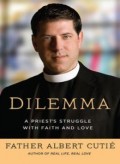A Time for Change in the Catholic Church

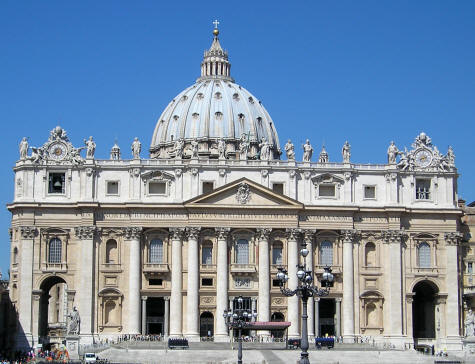
For centuries the Catholic Church, was regarded as an undivided and authoritarian symbol, a symbol of supremacy. During its history, the church’s failure to admit many of its wrongdoings and its Christian actions in the infamous Crusades, the Inquisition, and World War II has only served to condemn her even more.
Today, once again, the church faces damaging issues that shatter the very foundation of her existence. In light of all the recent publicity, issues that have either been ignored or kept hidden have resurfaced, and can no longer be denied. However, as in the past, the church’s obstinacy to admit failures and take proper action has created another major problem, a shortage of priests. In their continual refusal to allow priests to marry and the ordination of women, the situation has worsened their present situation. By permitting priests to marry and allowing the ordination of women, the Catholic Church can alleviate the shortage of priests.
The main issue for not allowing priests to marry is due to the Catholic Church’s long tradition of the chastity vow. They uphold their celibacy policy by adhering to specific biblical texts, but overlook many of the writings of the scriptures pointing to the acceptance of marriage, specifically that Jesus explicitly chose married men to be his apostles, including the well-known apostle Peter. The church also neglects to look at the epistles containing many references to married bishops and priests. For the first 12 centuries of church practice, many priests and bishops were married, among them 39 popes. Anastasius I, Saint Hormidas, and Sergius III, all popes, had sons of their own, and two of whom went on to be declared saints, Saint Innocent I and Saint Silverius (Horan, par. 3-4).

So how did celibacy become a prerequisite for priesthood? In the 11th century, Pope Gregory VII mandated that a pledge of celibacy must be made to anyone seeking ordination and stated that “the church cannot escape from the clutches of the laity unless priests first escape the clutches of their wives.” And in 1139, the Second Lateran Council and Pope Innocent II effectively put a halt to the married priesthood (Horan, par. 3-4).
But the celibate life deters many potential ministers, and those that are ordained are compelled to resign. A celibate life is what many refer to as an “unhealthy” way of life. Celibacy has become the main reason for an already dwindling Catholic priesthood. It is a growing concern among many because of the growing number of Catholics and a declining number of priests could affect the services provided to the laity.
Opponents claim that celibacy is not the cause of a shortage of priests. To distract and weaken the argument of celibacy and the shortage of priests, studies were made claiming that demands by the laity for the services of the church has not increased, but declined since the 1960’s. They do agree that the number of priests has declined dramatically, but argue that the impact of this decline has been greatly ameliorated by the influx of deacons and lay ministers. Furthermore, they claim that deacons and lay staff provide more services today than in the 1960’s and show a compelling number of active deacons in the church performing a significant and increasing amount of pastoral work of the church (Sullins, par. 3-6).
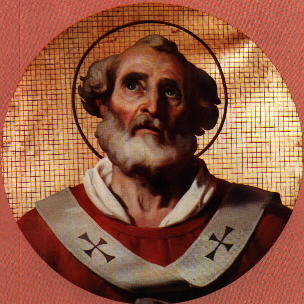
In addition, opposition argues that celibacy is the better choice because it frees the person from concerns of marriage and children, enabling a person to be more devoted to God and to have a more mature spiritual life (Swenson, par. 1).
Research strongly disproves this by showing that a decline in the ordination of priests is due to the celibacy rule. According to the Center for Applied Research in the Apostolate at Georgetown University, the number of priests in the US has dropped 15% in the last thirty years (Jabusch, par 10). And a major study, led by Dean Hoge of Catholic University of America in Washington, D.C. estimated that during the 1990’s, 10-15% of new priests resigned within five years, up from an estimated 8-12% in the1980’s. In a survey of 72 priests who left, nearly half said the loneliness of priestly life and celibacy were “great problems.” Ninety-four percent said the church should make celibacy an optional (Christian Century, par. 3).
With U.S. membership growing to more than 60 million, while ordinations have declined from 771 in 1975 to 442 in 2000, Hodge said the number of priests ordained in recent years represents only 35% of the number needed to replace priests who die, retire or resign (Christian Century, par. 5).

Interviews with clergy and laity show that an increase of ordained priests will raise if marriage is allowed. The solitary celibate life became a man-made law, a prerequisite for those who chose to be ordained. It is a great sacrifice to be made by those who have a call to serve God, and a way of life many will not chose because of the celibacy vow. One argument for celibacy is that it is a “sign value,” a sign of the heavenly kingdom and the priest is witness to spiritual values that contradict the materialism of the world (Jabusch, par. 5), but at what cost? Will the church survive with the dwindling number of priests being ordained or resigning?
The ordination of women will also alleviate the shortage of priests. But the refusal of Rome to allow women into priesthood has shed serious doubts regarding the nature of the authority of Pope John Paul II’s teaching in an apostolic letter declaring flatly that “the Catholic Church has no authority whatsoever to confer priestly ordination on women, and that this judgment is to be definitively held by all the Church’s faith.” The case was declared closed, sparking disagreement among theologians and within the larger community of the church (Woodward, par. 1).
These theologians conceded that various passages in the New Testament specifically proscribe the ordination of women, but it was followed not out of obedience to “the will of Jesus” but because of a common cultural conviction that “women are inferior to men and more easily led astray.” Boiling down to a twisted perception of power, of superiority and inferiority, domination and subordination, rather than equality, and neither side acknowledging that a priest serves the church and humbly serve God (Woodward, par 1-8). Then again, in the New Testament, women are mentioned time and time again, serving as witnesses to the many teachings of Jesus, just as the apostles. One prominent witness to His teachings was Mary Magdalene who was also considered to be an apostle in the Western church. Another witness to Jesus’ teaching was the Samaritan woman at the well. She became a testimony to her people in Samaria that the Messiah was amongst them and because of her testimony, they believed in Him.
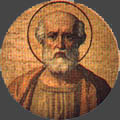
To say that celibacy is the better choice because it frees the person is an argument that has never been tested empirically. A data base consisting of 1294, mostly married evangelical ministers, and 80 Roman Catholic priests in Canada was utilized to test this argument, and it was theorized and verified that being celibate did not make a significant difference to one’s spiritual life (Swenson, par 1). The conclusion of this study was substantially consistent with the hypothesis that there are no significant differences in dimensions of religiosity and parochial commitments between celibate priests and married priests (Swenson, par 34).
It has been found that clergy are unable to relate to parishioners because of the lack of experience in marriage and family life. Many parishioners find it impossible to confess to a priest who was not married, who had never had teenage children and ask themselves, how could they relate to their spiritual condition? (Garvey, par. 7).
Many in the profession zealously refute the celibacy policy, and with due cause. The Vatican sees celibacy and Catholic priests as this— being a Catholic means that priesthood and marriage can never be simultaneously practiced vocations. Becoming a Catholic priest requires forever forsaking marriage commitment and the original promises to be celibate while being a Catholic priest cannot be negotiated without ending their active Catholic status (Horan, par 10).

However, the rules are bent when they deem it necessary. In June 1980, Pope John Paul II made special pastoral provisions for married Protestant ministers who converted to Catholicism to be ordained to the Catholic priesthood, bringing along their wives and children. Since then 70 married Episcopalians, Lutheran, Methodist and Presbyterian clerics have converted and were ordained Catholic priests, with the practice still continuing worldwide. The way the Vatican sees it is as this; the former ordained ministry of married Catholic priests allows for both marriage and ministry to be simultaneously practiced vocations (Horan, par. 5-6).
Nevertheless, shouldn’t the same vows of celibacy be applied equally? Furthermore, the church claims that becoming a Catholic priest should not require these clergy to forsake their marriage commitment prior to becoming a Catholic. Meanwhile 23,000 had left active ministry totaling 100,000 worldwide (Horan, par. 7-9). Again, the rules change for those priests who left their active status to be married, they are not welcomed back. The church simply says it is not fair claiming that they had a prior celibacy vow and that it wouldn’t be fair to others who have forsaken all for the promise of celibacy (Horan, par. 13-14). Simply put, the problem here is not marriage, but being catholic to begin with (Horan, par 11).
Furthermore, petitions, meetings and letters to the pope written by ex-clergy requesting a change in the church’s celibacy policy have been to no avail. Not long ago, more than 160 Milwaukee, Wisconsin- area Catholic priests have signed a letter calling for married men to be allowed to enter the priesthood. Copies of the letter were mailed to 442 active and retired priests. The returned signed copies hoped to spark dialogue on the issue of optional celibacy (Christian Century, par 1-3).
Many bishops, ministers, and theologians claim that celibacy should be an option, and feel that marriage “would not be a twenty-first-century innovation but the restoration of an apostolic practice” and revert to its “ancient heritage of married and celibate clergy and bishops” (Van Allen, par. 4 and 9).

Other factors may also play a part in the Vatican’s decision to maintain the celibacy vow. To allow priests to marry could bring an increase in costs to the church. The priests’ salaries would have to be doubled or tripled. Often wives and children are not happy with what is expected of the pastor’s family, as shown in the Protestant past experiences. Furthermore, congregations may have problems with the ministers’ wives, such as the experience of a Methodist minister who was removed from the church not because of his performance, but because the congregation detested his wife (Jabusch, par. 4).
In the New Testament, Jesus teaches us that celibacy is an option and does not condemn marriage (Matthew, 19:11-12); to the contrary, the scripture makes reference to marriage throughout its writings. In the Old Testament, the book of Genesis 2:18 says, “The Lord God said, -- It is not good for the man to be alone. I will make a helper suitable for him…Then the Lord God made woman…” (Genesis, 2:18).
Another claim for celibacy is that by renouncing all earthly ties and pleasures, including sexual inclinations, allows one a new life. This coincides with the primary motive for celibacy, which seems to be “singleness of heart,” meaning if one is to be devoted completely to God, one needs to renounce all worldly pleasure including the joy of sex. Affirming that celibate priests have an “undivided heart,” able to give themselves more and do all to a “greater extent” (Swenson, par. 10-13). That’s were many are under the misconception that not having sex turns someone into a pedophile.
Studies show that celibacy does not make normal men lust after children. Pedophiles in general are sociopaths with histories of crime and violence. Pedophiliac clergy are not. They tend instead to be sexually conflicted. According to Ronald Langevin, a psychologist at the University of Toronto, there’s no evidence that sexual abstinence leads to sexual perversion, but instead the celibate life might appeal to those who are already uncomfortable with their own sexuality. Imagining that the priesthood will help them cope with their disorder and repress their sexual yearnings “But they end up acting out” (Szegedy-Maszak, par. 5).

An extensive study of Catholic clergy and sexual abuse was conducted in the early 1990’s. Of 2200 priests, 40 priests were guilty of some sexual misconduct with minors, but only one of those was actually a pedophile. Most of the priest abusers are technically ephebophiles, that is, they abuse adolescents rather than children. Men who are ephebohiles are more likely to become more fully functional, since their attraction is often predicated on an adult, heterosexual maladjustment, rather than a deep attraction to children (Szegedy-Maszak, par. 7).
Why does this happen with Catholics and not other religions? This happens because with Catholics there is more militaristic hierarchy. In other religions, you have boards of directors and problems get caught in time mainly because they have 30 pairs of eyes watching and evaluating (McCourt, par. 10)
Much of the problems the church faces today is due to their perception and applied solutions to the problems they are facing. What is essential, according to psychologists, is that aberrant behavior be seen and treated as mental illness, instead of viewing it as sins to be confessed as it was initially viewed (Szegedy-Maszak, par. 9).

Another example of the church’s adherence to the celibacy policy may be due to the alternate sexual preferences among its priests. They are seeing a growing number of homosexual clergy in the past decades. To say that such people cannot be validly ordained is wrong. Many are faithful to their vows of celibacy and abstain from their previous ways of life, but others are not. It “presents a pastoral problem” in the church because “it discourages heterosexuals from choosing to enter the priesthood, it is wrong to say that the problem here is homosexuality. The problem is the violation of vows.” (Garvey, par. 8). Here again, it is proven that the celibacy vow has failed.
According to psychiatrist Volney Gay of Vanderbilt University, the church “is a “total institution” and some who enter it seek to be relieved of the burden of individual choice; you own nothing, you are given a new name, you renounce sexuality. It is a complete supplanting of the self, and as such it will always attract the truly holy—and the truly troubled’ (Szegedy-Maszak, par. 10).
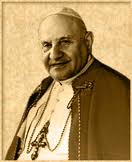
With all of the problems the church has faced throughout history, one would think that this small but significant medieval vow of chastity, which is a man made policy, would bring the Vatican, the church, and its entire clergy to a meeting of the minds and bring about much needed reform. But the powers that be do not concern themselves with these issues. It’s no wonder that “many feel that there will be no change and that the present pope has no interest in this subject. And the curial officials seem to see the priest and seminarian shortage as a passing problem caused by Western decadence and selfishness. But Constitution 50 of the Fourth Lateran Council (1215), an appropriate emendation spoken by Pope John XXIII on October 11, 1962, states that a change in discipline (statute humana) may be called for by a change in “the times.” Such an adjustment is indicated when there is urgent necessity or obvious usefulness.” (Jabusch, par 13-14).
Change is inevitable. Numbers speak for themselves, and the clergy are unhappy with the vow of chastity, for the solitude of such a demanding and stressing vocation requires more than policies and rules, it requires basic human consideration and understanding. Therefore, “allowing priests to marry, and ordaining women, would do an important thing: begin to change the culture of the priesthood— a culture that needs very considerable changing. It would help cleanse the sometimes fetid atmosphere of the rectory” (Morrow, par. 2).
Works Cited
“Allow Married Priests, Say Milwaukee Clerics.” Christian Century 6 Sept 2003: 14. Academic Search Premier. EBSCO. Edison Community College Library, Ft Myers, FL 31 October, 2003 http://www.epnet.com
Garvey, John. “Married Priests?” Commonweal 3 May 2002: 7-8. First Search. Wilson Select Plus. OCLC. Edison Community College Library, Ft. Myers, FL 31 October, 2003 http://www.oclc.com
Horan, John. “Lets’ Welcome Back Married Priests.” U.S. Catholic February 1999: 25-30. First Search. Wilson Select Plus. OCLC. Edison Community College Library, Ft. Myers, FL 31 October, 2003 http://www.oclc.com
Isolated Life Takes Toll On New Priests Christian Century 14 Nov 2001: 12. EBSCO. Edison Community College Library, Ft Myers, FL 4 November, 2003 http://www.epnet.com
Jabusch, Willard F. “Celibacy At All Costs?” Commonweal 22 May 22 1998: 11-12. First Search. Wilson Select Plus. OCLC. Edison Community College Library, Ft. Myers, FL 31 October, 2003 http://www.oclc.com
McCourt, Frank. “How To Fix It.” Time 1 April 2002: 36. First Search. Wilson Select Plus. OCLC. Edison Community College Library, Ft. Myers, FL 31 October, 2003 http://www.oclc.com
Morrow, Lance. “Let Priests Marry.” Time 25 March 2002: 54. First Search. Wilson Select Plus. OCLC. Edison Community College Library, Ft. Myers, FL 31 October, 2003 http://www.oclc.com
“Optional Celibacy Is No Option, Bishop Says.” Christian Century 20 Sept 2003: 14. Academic Search Premier. EBSCO. Edison Community College Library, Ft Myers, FL 31 October, 2003 http://www.oclc.com
Sullins, D. Paul. “Empty Pews And Empty Altars.” America 13 May 2002: 12. EBSCO. Edison Community College Library, Ft Myers, FL 4 November, 2003 http://www.epnet.com
Swenson, Don. “Religious Differences Between Married And Celibate Clergy: Does Celibacy Make A Difference?” Sociology of Religion 1998: 37-43. First Search. Wilson Select Plus. OCLC. Edison Community College Library, Ft. Myers, FL 31 October, 2003 http://www.oclc.com
Szegedy-Maszak, Marianne. “Chastity And Lust.” U.S. News & World Report 1 April 2002: 54-55. First Search. Wilson Select Plus. OCLC. Edison Community College Library, Ft. Myers, FL 31 October, 2003 http://www.oclc.com
Van Allen, Rodger. “Bishops Should Marry.” Commonweal 12 July 2002: 31. First Search. Wilson Select Plus. OCLC. Edison Community College Library, Ft. Myers, FL 31 October, 2003 http://www.oclc.com
Woodward, Kenneth. “Was The Pope Wrong?” Newsweek 16 June, 1997: 48. EBSCO. Edison Community College Library, Ft Myers, FL 4 November, 2003 http://www.epnet.com

© Faithful Daughter





